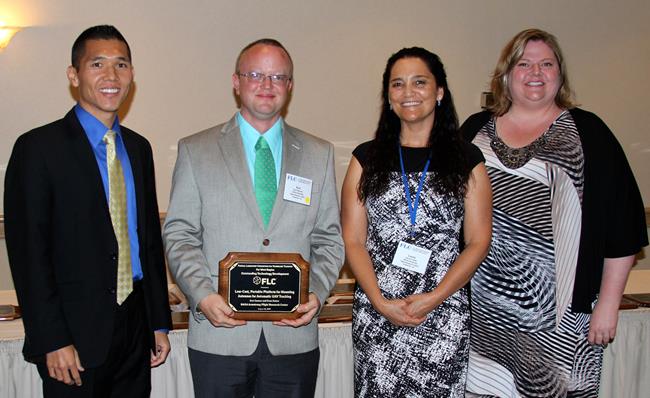
PALMDALE – Armstrong Flight Research Center employees have won two Federal Laboratory Consortium (FLC) Far West Region’s outstanding technology development awards. The technologies recognized are for Low-cost, Portable platform for Mounting Antennas for Automatic Unmanned Aerial Vehicle (UAV) Tracking and A Proven System for Preventing Ground Collisions of Aircraft.
Kurt Sanner and intern Evan Kaiser developed the antenna platform that will address an unmet need in the UAV market by integrating multiple capabilities on one low-cost platform. The technology allows for the capability to point four or more interchangeable antennas of any type at a moving target in the air or on the ground.
This unique continuously rotating platform is portable and can position and hold nearly 60 pounds of antennas and radios, only limited by the size of the mounting bar installed on the platform. The antenna can track an aircraft flying 200 knots at a distance of 500 feet from the antenna.
The second award for preventing ground collision was designed by employees Mark Skoog, Loyd Hook, Kevin Prosser, Shaun McWherter and Jamie Willhite. The technology is laying a foundation for a system that would automatically take control of an aircraft should the pilot be disoriented or unable to use the navigation system for the plane.
Working with the Air Force for more than 25 years for this type of technology, Armstrong has been developing this type of collision avoidance technology that can entail minimal modifications to aircraft that could save numerous lives and aircraft.
The FLC Far West region is one of six regions covering the United States comprised of eight western states: Alaska, Arizona, California, Hawaii, Idaho, Nevada, Oregon and Washington. There are over 100 federal laboratories and facilities rich in federal Laboratory resources and programs for technology transfer.
For more about NASA’s Armstrong Flight Research Center, visit: http://www.nasa.gov/centers/armstrong.